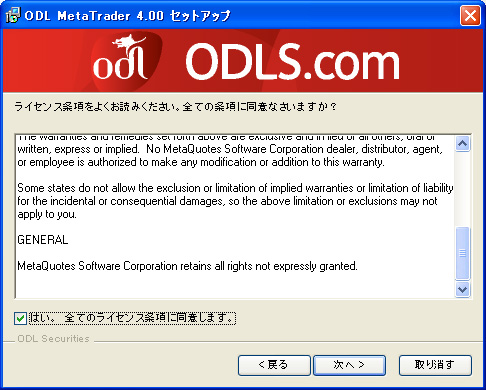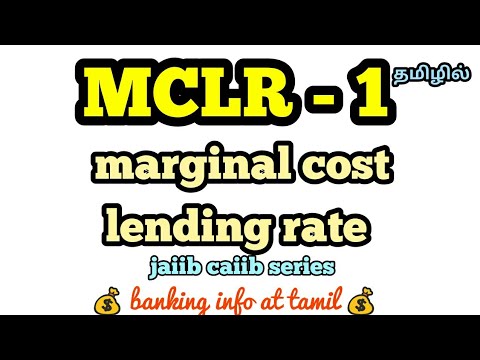Contents
A stop loss order is an order placed to sell a stock when it reaches a certain price. The stop loss order is primarily meant to limit your loss on a stock that you have already purchased. Don’t be greedy or scared and enter a Stop Loss for only a few cents below your purchase. Every stock must have some breathing room and you don’t want to get sold out senselessly.
So is there anything in the stock market that does the same? Read on because this may be a more crucial tool than your analytical ones. This is an excellent feature and I still do not understand why this cannot be availed by customers who opted for unlimited trading plan. It is our endeavor to continuously improve the experience for our clients. Introduction of bracket orders was a small effort in that direction. To be able to offer such services it is important not just to burn cash but also be able to make money out of it.
Hence ticks are a function of how the exchange looks at a certain security’s price change. 1) Suppose you select ticks then you are required to mention 40(2/0.05) in sell orders. This means, every rupees increase in price consists of 20 ticks. Because the maximum loss is limited,the margin requirements are really low (between 2% and 2.5%) compared to the 10-11% margin requirement in other risk based trades.

This type of stop loss orders does not put a ceiling on profits. The traders will hold their positions as long as the market price of a financial instrument does not fall below the set percentage. Stop loss is a trading strategy whereby a trader sets an order—in advance—to sell the stocks once it reaches a particular price point, be it to limit the losses or gains. Also referred to as stop order or stop-market order, stop loss applies to both short-term as well as long-term trading. In continuing our previous example, the wise investor re-purchased shares of axis after the bear market when it crossed the 200 DMA, and placed a trailing stop loss. A trailing stop loss is set to automatically move higher as the stock advances.
What is Bracket Order And Trailing Stop Loss?
Traders use this order to protect themselves from incurring a loss when they buy a stock. There are variations of stop-loss orders traders can place in the market to protect themself against their long positions and short positions. Trailing stop loss and limit orders are both available on all listed securities and the trigger is taken from the last trade and can be entered as day orders or good till cancelled orders. Suppose, Mr. X purchased a particular stock at $100 per stock and set a stop loss order at 10% of the market value.

This update of the Stop Loss prices can happen automatically if a Stock Broker supports Trailing SL orders or it could be done by manually updating the existing Stop-Loss order. So, if a trader had bought shares and placed a Trailing Stop Loss, then the Stop Loss price will move up when the price of the stock moves up. But if the stock price moves down, then the Stop Loss will remain the same. The Trailing Stop Loss is a concept where the Trigger Price of a Stop Loss order is regularly updated when the price of the security moves. Usually, the Trailing SL is used to lock-in some profits when the prices are moving in favor of the trader. A very important part of stop-loss orders is Trigger Price.
Therefore, a trader has to execute the trade manually once it reaches the price point that s/he has set—taking an insight through various technical analysis indicators. The very basic, it helps traders minimise losses by the ways discussed above, Since stop loss works on automation, the investor is not required to be glued to the trading terminal. Now, the trailing stop loss will adjust automatically to the new stock price. The trigger price in stop-loss order is the price at which you want to sell the stock.
Types of Stop-Loss orders
Keep reading if you would like to understand more about Stop-loss orders and how you can benefit from them. Once you have entered into your strategy, every time your strategies conditions are checked, the Tradetron server will lock a value based on your PNL. Activate at is the PNL after which your trailing stoploss mechanism gets activated.
- This way, the trader has locked-in a profit of INR 300 (INR 5,300 – INR 5,000) and the stock will now be sold if the price hits either INR 5,500 or INR 5,300.
- It is to be noted that stop loss is an automatic order in the case of foreign nations.
- Requesting please provide live training class about all new features of Dhan app.
- A more elegant option however, that is made available in a bracket order, is to have a trailing stoploss.
So, the trader will just have to enter the trailing price details once, at the order placement time. This order type helps minimize the downside by cutting the loss that can be incurred. What we traders colloquially call trailing stop loss is in reality a trailing stop loss order. A TSL in an algo setup is not achieved through individual orders but through a calculation based on the overall PNL of your strategy. It is important to note that when the trailing stop loss in an algorithm is achieved, it simply closes all open positions through a Universal exit. This is quite different as compared to a broker’s TSL order where the broker is continuously modifying the order that was sent to the exchange based on your trailing inputs.
Whether they are looking to prevent excessive losses to lock all your profits, you can apply and gain benefit from this tool. Stop Loss order means the investor and broker have set an automated instruction if the price of a stock falls at a specific level to protect them from loss and execute the sale of a security. Stop Loss helps several investors manage all their losses by selling their bonds and stocks if there are chances of dropping below a certain level. Stop Loss order means the investor and broker have set an automated instruction if the price of a stock falls at a specific level to protect them from Loss and execute the sale of a security. As for the targets/gains an individual wants to achieve, it should be 1.5 times the stop loss percentage. The targets can also be higher depending on the returns expectation of the individual, provided it is on a trailing stop order, which can limit losses and also lock in profits.
Volatile Markets – Invest in MF SIP
Investments in securities market are subject to market risks, read all the related documents carefully before investing. Taking the same example, to prevent the loss, if the investor sets the stop loss at Rs 90, and the stock price hits Rs 90, the order will be squared off immediately. Stop-loss market order is the case when you set a price to prevent losses and get what you expect, well almost.
Trading order types serve the purpose of instructing the stockbroker on when to enter or exit the trade on behalf of the trader. The order type chosen has a significant impact on the outcome of the trade. Of the many trading order types, a crucial one is the ftse stock exchange Order. Stop loss helps prevent large and uncontrollable losses in volatile trades, especially in the bearish run of the market. If not applied, it can wipe out a huge chunk of the trading profit or start diminishing the capital gradually. It costs nothing to implement a stop loss order as the brokerage won’t charge you for setting the stop orders.
But if the price falls sharply below Rs 88, your order will remain unsold. Assume you bought 1,000 shares of a company at Rs https://1investing.in/ 100 per share. You enter a stop-limit order with a stop price of Rs 90 and decide to specify a stop-limit price of Rs 88.
Stock Split Meaning, Benefits, Examples & Reverse Stock Split.
For example if you have selected a 2X multiplier on the ‘deployed’ page for your strategy, the TSL values will also be doubled. Once the overall profit is greater than the ‘activate at’ price and the ‘profit increased by’ price, the TSL will now shift from zero to the number you set here. Pay 20% upfront margin of the transaction value to trade in cash market segment. There may be some time when your broker will charge you for using stop-loss to be added to the brokerage fees.
If there is no clarity there, the trader won’t ever know the “right” time to leave the stock and book the profit. So, the sale will be triggered as soon as the price reaches ₹648. When the price of a stock surges, the trailing stop drags along with it. When the price stops surging, the new stop loss now adjusts at the level it is dragged up to. Hence, on one hand, it safeguards investors’ downside; on the other hand, it locks the profit when the price reaches new highs. Yes, bracket orders can be used to trade in Nifty options as well.
Let us look at few examples to understand how a Trail Stoploss order might be used. Update your mobile number & email Id with your stock broker/depository participant and receive OTP directly from depository on your email id and/or mobile number to create pledge. Stop-loss is a simple yet effective tool that can be used to minimize your losses and lock in your profits. We hope this article has answered your queries regarding Stop-loss orders, and now that you know how to place Stop loss orders with Angel One. If the LTP of ‘X’ falls to ₹90, the Buy Stop-loss order will adjust to the trigger price of ₹100. In this case, once the trigger price is reached, the Stop-loss Order gets converted into a Market Order.
If the shares of the company start rising and reach Rs 110 or above, the stop order to buy is triggered and the order would be executed at Rs 110 or slightly higher. Suppose Mr. Nithin has bought 1,000 shares of company X at a price of Rs 100 per share. There are no separate charges of using a trailing stop loss in your trades. Therefore, in order to make the best out of a trade, the traders are advised to use specific order types.
An investor bought it at Rs 100, now instead of marking stop loss at Rs 90, the investor marks trailing stop loss at 10% of the market price. This means if the stock falls 10%, the order will be executed. So if the market was at and you put a stop-loss at 8520 with 2 points or 40 ticks as your trailing ticks, when the market gets to 8542, the stop loss will become 8522. Now if the market goes above 8560 (and let’s assume your target was at 8570) the stop loss will become 8540 which was originally your strike price.
While many investors are unfamiliar with these terms like stop loss or stop-loss order, it can serve as a lifesaver. Along with having good fundamental and technical knowledge of the stock market, mastering one’s emotions and maintaining discipline is also an important part of a trader’s success. If the shares decline to the stop price of Rs 90, the 1000 shares of the company will be sold as long as a minimum price of Rs 88 is obtained.
This type of stop loss order efficiently helps in managing both risk and trade. Technical indicators can be used to put in a trailing stop loss. Trailing stop loss orders are established to function automatically with stockbrokers and their investing software. Thus, stop loss close its deals too soon and limit the profit potential of an investor. Suppose Aman holds 1000 shares of Tata Motors, which he purchased for 200 per share, which means he has invested RS 2,00,000 in Tata Motors.
This order type prevents traders from taking reckless decisions based on their emotions. It helps them to concentrate on their predetermined objectives. Stop-loss, when used appropriately and correctly, will make a lot of difference in terms of investing. Every individual who is stepping into the stock market must know what stop-loss is all about.
As a result, the sell order gets automatically executed once it hits the price of $90. It is also to be noted that the stocks generally do not fall below 15% or more if the general market is acting well. However, there exist exceptions such as economic turmoil in the nation. When the stock triggers a 15% stop loss, it is indicating to you that something isn’t right.



